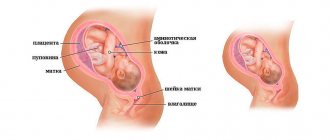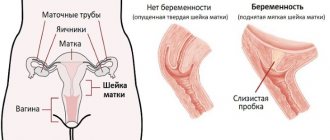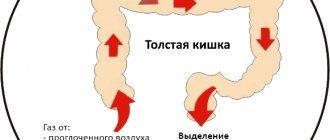Even 300 years ago, women gave birth to children differently than modern women do. There were no special gynecological and obstetric chairs, as well as special devices that could be used to facilitate the process of childbirth. Midwives helped the girls give birth. In this case, the woman was either in a standing position or squatting. This is how vertical childbirth took place. Today they also practice. In this article we will talk in detail about what vertical childbirth is with photos .
Childbirth in an upright position: what is it?
Vertical childbirth was carried out in all medieval European countries until Louis XIV abolished it. The fact is that the world-famous leader of France loved to watch women give birth in pain. The sitting position of the woman in labor at the time of expulsion of the fetus blocked the king’s entire view, so the doctors were forced to put the woman on her back.
Whether this is true or historical fiction is still not known for certain. But the fact is clear that in the last few years, many maternity hospitals have begun to return to the practice of performing vertical births, because in this process the uterus contracts faster and the child is born faster.
Thus, we can conclude that vertical birth is a normal delivery process in which the woman does not lie down, but either stands, sits, or is constantly in motion.
DANCE OF THREE
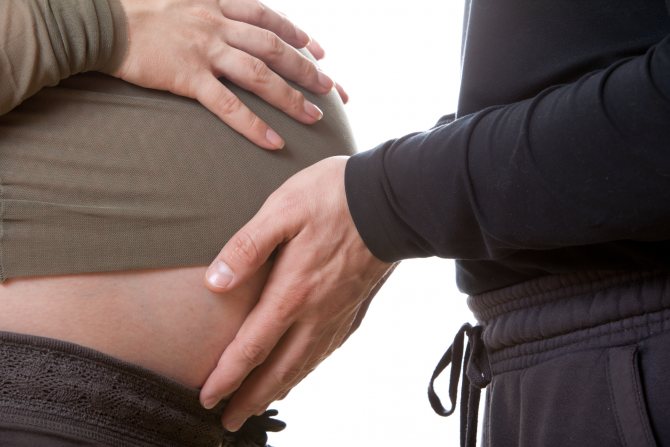
Anna Mikhailova from Naro-Fominsk is an experienced mother. But if her first birth was classic, then she gave birth to her second child vertically, in the company of her husband and... an 80s disco.
“I first heard about vertical birth from a friend,” says Anna. “According to her, the whole process was easier and even more fun. When I found out that this technique was also practiced in the perinatal center of Naro-Fominsk, I also decided to try it.
According to the woman, the second birth was revolutionary for her. Firstly, the husband decided to participate in the process. During contractions, he massaged his wife and entertained her with anecdotes, and when the attacks became especially severe, he came up with an ingenious distraction maneuver.
– Imagine, he turned on the music on his phone, hugged me, and we started dancing. From the outside it looked like being trampled by two bears, but it was incredibly distracting! – Anna shares. – If you compare it with the first birth, when I spent the entire period of contractions lying on the bed alone and studying the whitewash on the ceiling, the difference is impressive!
As they said at the Naro-Fominsk Perinatal Center, the vertical birth method has been used in the institution since its opening in 2017. But right now this method is gaining popularity.
– During the first and second stages of labor, almost until the birth of the child, the woman can be vertical. Of course, in the presence of doctors and if there are no contraindications,” says Daria Grigorieva, head of the maternity department. – It is believed that vertical birth is less painful and goes faster. Moreover, if a woman’s labor becomes rapid, we, on the contrary, put her to bed. After all, rapid labor is harmful for both the woman and the child.
How is vertical birth performed?
Like horizontal childbirth, vertical childbirth takes place in 3 stages:
- Stage I – the woman’s cervix opens. This is the most painful period and the longest. It is very important that during this period the woman in labor moves more to stimulate the uterus to contract stronger and faster. You can walk, sit on a special ball, swim in the pool. In principle, many doctors now force the woman in labor to move during the entire first stage of labor and forbid her to lie down. This, of course, is very exhausting for the woman, but it allows her to shorten the duration of her labor. According to reviews from women who have experienced vertical birth, it is very difficult to survive the first stage of labor on your feet if there is no person nearby who can provide support.
- Stage II - the fetus comes out of the mother's womb. During this period of vertical childbirth, the doctor selects a comfortable position not only for the woman, but also in order to deliver the child. Usually the woman is seated on her haunches, on her knees, or on a special chair. If it becomes more difficult for the baby to come out in an upright position, the doctor can at any second put the woman in labor on her back to help the baby be born. But, as a rule, a woman’s sitting position on a special chair helps her relax so that the baby comes out of the womb softly and smoothly.
- Stage III is the expulsion of the placenta, which occurs quite quickly if the woman is in an upright position. At this moment, the new mother is already holding her child on her chest, who should take the breast in the very first minutes of her life.

Vertical birth: preparation
To prevent vertical childbirth from exhausting a woman, she should prepare for it in advance:
- It is imperative to attend training courses for expectant parents, where pregnant women are taught how to breathe correctly during childbirth and relax the muscles, which, under the influence of the contracting uterus, begin to move apart strongly and resist the process of childbirth. Therefore, a woman often feels precisely this pain, and not that which is caused by severe uterine cramps.
- A woman should learn and try on herself all the positions that are usually used during vertical childbirth. She should know how to sway on a special fit ball, what rotations of the pelvis should be done while doing this, how to sit so that the muscles of the pelvic area relax as much as possible. If the expectant mother masters all this long before giving birth, she will be able to avoid the panic that envelops all women with the onset of contractions and ruptures of the perineum during pushing.
- You need to find a maternity hospital that practices vertical birth. After all, unfortunately, not all maternity institutions are equipped with the necessary medical devices so that a woman can give birth in a position that is comfortable for her. As a rule, maternity hospitals that perform vertical births do it free of charge .

- Agree with a doctor who has attended childbirths in which the woman was in an upright position for many years and a sufficient number of times. The experience of a specialist in this matter plays a decisive role. Even if there are no such doctors in your city, invite him to your birth or go to give birth where this obstetrician-gynecologist works. Not only your health, but also the health of the baby he will help be born will depend on his qualifications.
Horizontal and vertical childbirth: which is better?
Lying on your back is believed to be the common method of childbirth. This option is convenient for the doctor and even for the woman in labor this position brings some comfort. But the main characters of the action are not the doctors, but the child and his mother. Therefore, it is important to take care of their health.
Giving birth lying on your back means experiencing certain disadvantages. The most popular are:
- the woman feels more pain;
- less oxygen reaches the baby;
- the birth of the fetus is slow, sometimes stimulation is needed, which can harm the health of the woman and baby;
- it takes more effort to push the newborn out;
- The leaders are the medical staff, and the mother plays a secondary role in the process of giving birth to the baby.

Vertical childbirth causes injury in 1 case out of 100, and the need for dissection of the perineum occurs in 5 out of 100 women. If we compare with the indications of horizontal childbirth, the results are noticeable, since when a child is born in a horizontal position, 5 out of 100 women are injured, and 25 have ruptures.
Another advantage of giving birth while standing is the minimal risk of uterine infection and the low likelihood of large blood loss. It is worth noting the fact that when a woman gives birth while lying on her back, the uterus puts pressure on the spine and this interferes with normal blood circulation in the body. As a result, the expectant mother “demands” painkillers, which affect the child’s health.
Reviews about vertical childbirth are positive. Women who know how harmful it can be to give birth on their back are glad that this option exists. They are happy to go to the maternity hospital to see obstetricians who practice vertical birth. Vertical childbirth is popular all over the world.
Pros of vertical birth
Now let’s take a closer look at why vertical childbirth is better than horizontal childbirth. There are several main advantages of this delivery process:
- During vertical birth, the uterus does not put as much pressure on the large blood vessels located in the abdominal cavity, so the baby can receive the amount of oxygen it needs. That is, the likelihood of hypoxia occurring during vertical birth is minimal.
- During vertical birth, the uterus opens smoother, more intensely and faster. A woman gives birth to a child much faster than with a horizontal birth. At the same time, the baby, moving along the birth canal of a woman who has taken a vertical position, will definitely not press on his head with hematomas and other neoplasms, which often happens during a rapid birth.
- Due to the fact that the uterus opens smoothly, a woman’s risk of internal and external ruptures is reduced. In this case, the baby requires much less energy to pass through the birth canal.
- During vertical labor, there is no heavy bleeding from the uterus during the expulsion of the placenta in the third period.
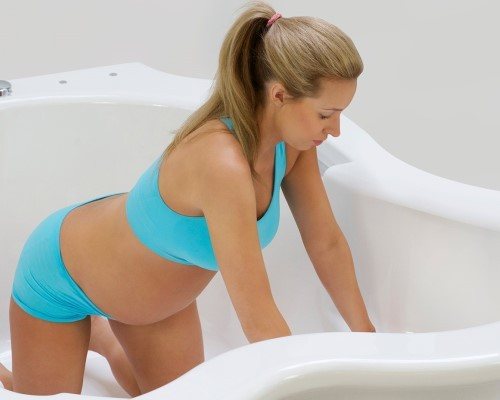
- A woman in labor can see with her own eyes, in an upright position, how her baby is born. With the first cry of her baby, she can already fully experience the happiness of motherhood and forget the torment that she had to go through to earn the right to be called a mother.
ADVANTAGES AND DISADVANTAGES
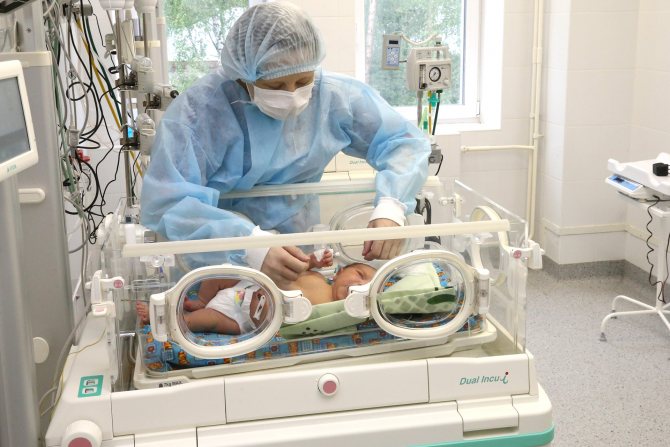
Today, vertical childbirth in the Moscow region is practiced in all 3rd level maternity institutions (perinatal centers - Ed.). In addition to Naro-Fominsk, for example, the service is popular in Balashikha.
“Vertical birth does not necessarily imply a standing position for the woman in labor - this is quite uncomfortable, but rather has a free character,” says Lyudmila Sedaya, deputy chief physician for the medical department of the Moscow Regional Perinatal Center. – A woman can stand, sit in a special chair, kneel or squat and change the chosen position depending on her own needs.
The main advantage of vertical birth is that sometimes there may be less pain, and the first stage of labor is shortened by 2-3 hours.
– But it is important to understand that vertical birth is possible only if the pregnancy proceeded without pathologies, and the ratio of the size of the fetus to the woman’s pelvis is optimal. In case of premature birth, the vertical position is contraindicated, continues Lyudmila Sedaya. – Multiparous women have a risk of rapid labor. In addition, the woman in labor should take into account that pain relief is not provided during vertical childbirth.
Before choosing a vertical position during childbirth, expectant mothers should definitely consult a doctor and also attend special courses. There, women in labor are taught special breathing techniques.
“Proper breathing reduces pain during contractions and speeds up the birth process,” explains Sedaya. – A woman in labor who has neglected childbirth preparation courses may encounter difficulties in choosing a comfortable birth position.
Vertical birth: cons
Alas, vertical childbirth also has some disadvantages. Not all doctors today agree to deliver babies if a woman wants to give birth in an upright position. Why:
- A woman in labor at the first stage of labor cannot rest or sleep. Because of this, her strength is depleted, she can no longer be as active as necessary during the period of expulsion of the child from the womb.
- During vertical childbirth, the doctor is very limited in his movements, because he is forced to adapt to the posture of the woman in labor. Most modern gynecologists want to be in 100% control of the situation at the crucial moment of delivering a baby, but vertical birth is still a risk.
- If a woman begins to weigh a lot at the time of giving birth (as a rule, this is what happens), then under the pressure of weight she can strain tears in the perineum, as well as hemorrhoids, which will take a long time to heal.
- Vertical birth does not require the use of anesthesia. The woman will be forced to endure excruciating pain all the time, while, as with a horizontal birth, she can be given spinal anesthesia.

Vertical birth: contraindications
Sometimes doctors refuse to allow women to have vertical births, not because they see many contradictions in this process, but because they are simply contraindicated for the mother in labor. What is included in the prohibitions when no childbirth can be performed except horizontal:
- if a woman’s labor begins prematurely, then she should give birth only in a supine position (most likely, she will have a caesarean section);
- if the child does not lie with his head down, but, for example, with his legs or buttocks, then giving birth in a vertical position is also impossible;
- if a woman has a pathologically narrow pelvis, and the child is quite large, then she can only give birth lying down;
- If a woman is not a firstborn, then her second birth will proceed much faster than the first, so vertical ones can only do harm (lead to ruptures of the perineum).

If you are not one of the women who has contraindications for vertical birth, do not be afraid to take this step. Childbirth is in any case a difficult physiological process for a woman. And so, and so it will be painful. Think about what it’s like for a child moving through the narrow birth canal. Vertical childbirth is an opportunity to ease his suffering and bring the time of meeting the long-awaited baby closer.
Contraindications

. Vertical childbirth is prohibited if:
- Childbirth occurs prematurely.
- The fetus suffers from lack of oxygen.
- The baby is large.
- There is a need to cut the perineum.
- Any complications during childbirth are observed, for example, incorrect position of the baby, placenta previa, or high risks of injury.
- The woman has a narrow pelvis.
- There is a need to use obstetric forceps.

